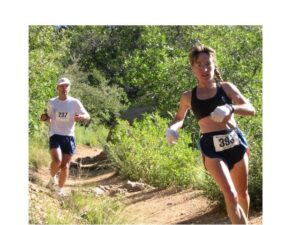Forget about the feet, good running form starts with the hips according to Running Times Magazine
Running form has a lot to do with whether we experience running injuries, have chronic problems from running and are able to run fast or slow. True, the type and shape of your feet have a lot to do with how you naturally learn to use your own body when you run. Also true is the way we run is often affected by those compensations we make to our own body style which I believe is why many of us lift our shoulders which slows us down and increases over and under striding (I have seen this hundreds of times on videos of runners on treadmills).
Running times believes foot strike and minimalist shoes are not the answer to better running. In their opinion, it is all in your hips. They make a good case although ignoring the affect of our feet and symmetry as if it has little or now effect is questionable. Read the article here
It’s All in the Hips
Foot strike, the darling of minimalism, is overrated. Good form starts with the pelvis and the glutes.
Watch a video of Kenenisa Bekele winning a 5,000m or 10,000m, and it is quickly apparent that he and the rest of the world-class pack with him are doing something different from what most of us do every day. They float around the track, hardly seeming to touch it. They accelerate smoothly and effortlessly. Their legs seem to spin beneath weightless bodies.
We want to run like them, but too often we feel like we’re muscling our bodies along, pounding the ground and working for each forward push. What element of their stride creates the difference? Where should we look?
For the past several years, we’ve been told to focus on their feet. Elite runners are different, form experts have said, because they land on their midfoot or forefoot, and we should do the same to run more smoothly, faster and with less injury. Where your foot makes contact with the ground became a litmus test of running prowess. Among some runners, the label “heel-striker” attained the stigma of “learning impaired.”
And yet, many of those who adopted a forefoot strike and the minimalist shoes that accompanied the movement didn’t see an improvement in times and continued to get injured. So much so that the movement has all but disappeared.
A wide range of experts–from kinesiologists to physical therapists, orthopedists to coaches–agree that the extreme emphasis the running world has put on foot strike is misplaced. Daniel Lieberman, the Harvard scientist who gave scientific credence to minimalism with his seminal 2010 article in Nature, says, “Frankly, when we published that paper, I never expected everyone to obsess about it as much as they did. Had I realized that, I would have added a sentence to the effect that while foot strike is important, there are many other important aspects of form as well. I have learned over the years that the worst thing to tell anyone is to forefoot strike.”
read more
